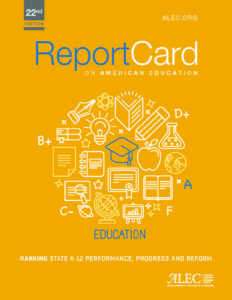
The Myth of the Underfunded American Education System
We’ve all heard the canard that education is underfunded. But education in the United States is a $600 billion enterprise, and this country spends more on its education system than many of the countries getting far better results. Here’s something you won’t hear from politicians or most media outlets: education in the United States is not underfunded, and paying more money into a failing system won’t produce higher academic achievement, or better life outcomes for students.
The U.S. has been increasing education funding dramatically since the 1970s, and the taxpayer has gotten stagnating scores and failing schools for his trouble.
And there is little evidence that these spending increases have created any achievement gains. A state-by-state analysis of per-pupil funding increases compared with improvements or backsliding on the NAEP test – known as the nation’s report card – found no correlation between spending more and improvement over that state’s previous scores. In fact, some states, like Indiana, improved performance substantially without increasing spending, while others like New York spent an additional almost $4,500 per student, just to do worse than they did the previous year.
If the money taxpayers are pouring into the education system is not going to help increase achievement, where is it going? One filmmaker in a New Jersey city tried to find out, and discovered all kinds of favorable construction projects, made-up teachers’ aides, and corruption. But even non-fraudulent uses of taxpayer funds by the education system frequently overlap very little with the vision of textbooks and teacher salaries the typical taxpayer imagines he funds. Since 1970, while student population growth has stayed reasonable at 8 percent, non-teaching staff growth has exploded by 138 percent. And in some cities, like Chicago, education spending has become so disconnected from the classroom that 89 cents of every new education dollar is spent on pensions rather than in the classroom.
In contrast, educational choice programs, such as the education savings accounts, vouchers, and tax credit scholarships supported in ALEC model policies, have a record of success across different measures, from test score increases, to parental satisfaction, to life outcomes for students. A new meta-analysis from the University of Arkansas on a variety of school choice programs showed substantial gains in both reading and math scores for students whose parents were empowered to choose the educational opportunity that was right for them. Not a single parent surveyed in Arizona’s ESA program reported being dissatisfied with his or her experience. And students in one voucher program studied had a 79 percent lower likelihood of being convicted of a felony than their peers who tragically lost the voucher lottery.
The reality is that the endlessly-higher funding strategy has been tried. It’s what our flailing education system has tried for years, and it has yielded nothing but more failure for American students. It’s time to empower parents with educational choice instead – it is only there where the real change is happening.



